I've had my Fuji X100s for a couple of weeks now but haven't had an opportunity to travel with it. The challenge for me with this new camera was to see if I needed anything more for my photography needs when traveling, ie; zoom and wide angle lenses, filters, tripods, flashes; in other words an extra bag just for my gear. This post is a result of purposefully traveling with nothing more than my X100s, two spare batteries, extra SD card and cleaning cloth; all of which fit nicely in my front pant pocket. All the photographs in this post were taken with that camera.
The trip; Victoria, BC on Vancouver Island in the Pacific Northwest.
Living in the beautiful Puget Sound Region of the Pacific Northwest lends itself to some of the finest travel around. Seattle and the many stunning small mountain and harbor towns of Washington. Portland Oregon and the Oregon coastal communities. And just a little farther south, the incredible Red Woods of northern California, San Francisco and of course; the mesmerizing coastal highway, US 101.
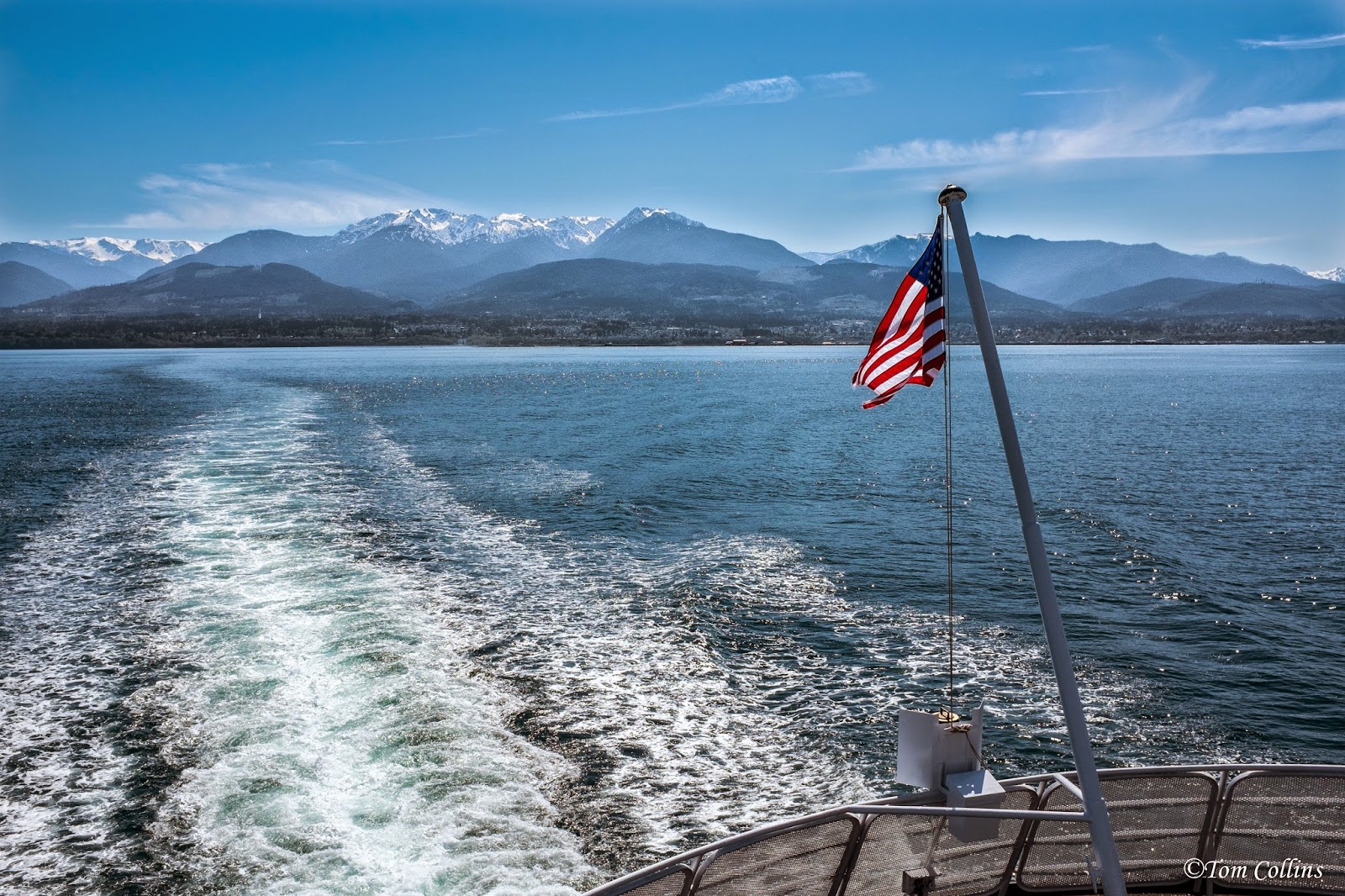 |
| Leaving Port Angeles, Washington on the Coho Ferry. |
For something a little different and for as little as $17 and a 90 minute boat ride on the Coho Ferry out of Port Angeles, Washington; you can be in an other country and experiencing another culture. Beautiful Victoria British Columbia on Vancouver Island. It's located directly across the Straits of Juan DeFuca from Port Angeles, Washington. The Black Ball Express operates The Coho and provides all of the comforts you'll need for the short ride. A duty free shop, a food galley, comfortable seating for about a thousand people and big windows. If you plan to drive around once you get to Victoria, there's even room for your car at a slightly higher fee. However, I've never found a need to drive and find everything I need and want to do in Victoria easily accessible on foot, by boat taxi or regular cab. Of course, there are also scooter and car rentals available on the island as well.
Welcome to Victoria, BC. I'm on the Coho and actually leaving in the photo below. The weather in Victoria is pretty similar to the weather throughout the Pacific Northwest, but maybe just slightly better. On this trip we had glorious sunshine for three of our four days and on the last day it clouded up and began to sprinkle.
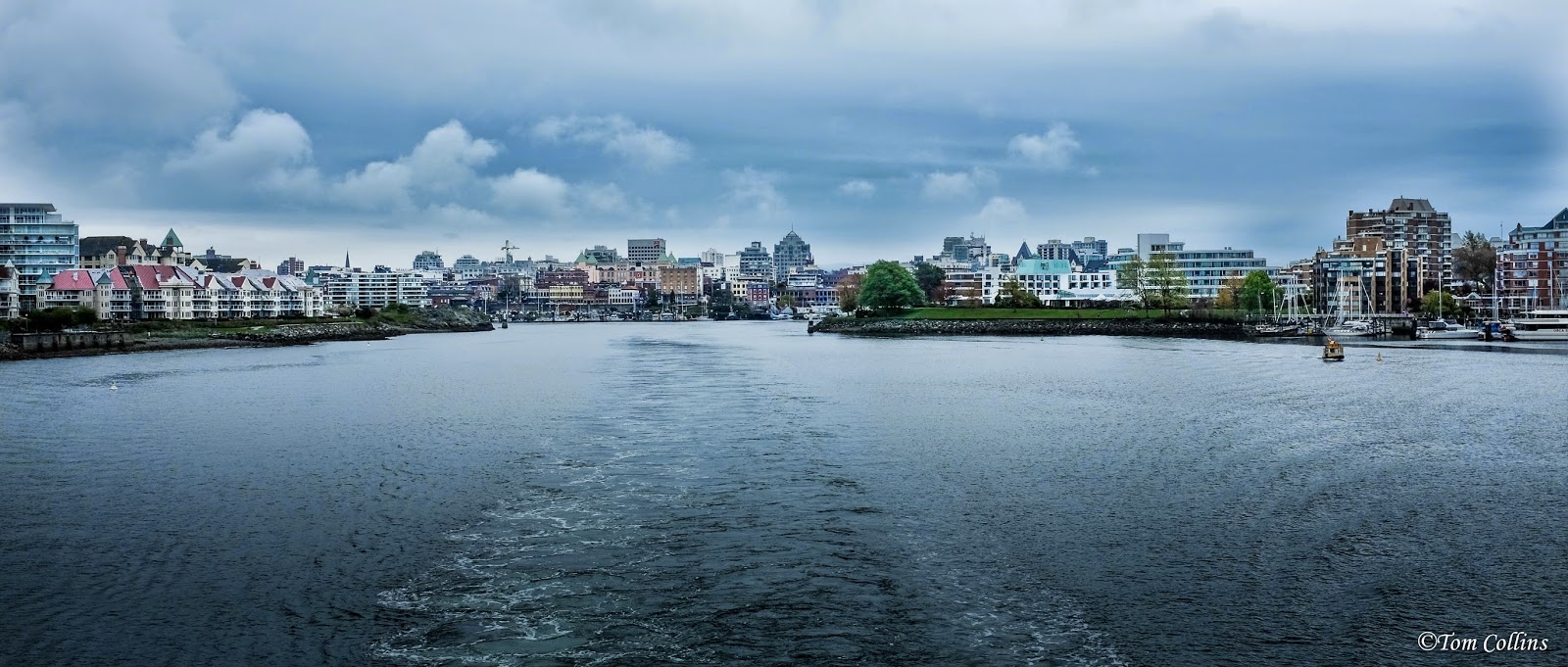 |
| View from the back deck of The Coho Ferry looking toward Victoria's Inner Harbour. |
Traveling to BC you'll need all the usual papers for traveling out of the US. Passports are best, but make a call and check first. Arriving in Victoria's Inner Harbour puts you right in the middle of everything. Hotels, restaurants, shopping, museums; are all within walking distance of the ferry landing dock. If you have extra baggage, there are always cabs waiting right out front of the terminal. Cab fare to just about anywhere in the city is usually under $10.
Once you're on the streets you'll see the wonderful preservation of Victoria's old buildings. Anyone building in Victoria is only allowed to remodel the interiors of it's buildings and fix up the exteriors. They may not tear any of the old buildings down and the result is a city of extraordinary old world beauty. Local and name brand shops are housed in these buildings, as well as some of the best restaurants you'll ever dine at.
The variety of cuisine in this town is phenomenal. It is truly a world class culinary experience. A favorite breakfast spot to frequent is The Jam Cafe, where the line to get in for breakfast on the weekend can be a little daunting, but so worth the wait. Their "Caesar" (bloodymary) is one of the best I've ever had.
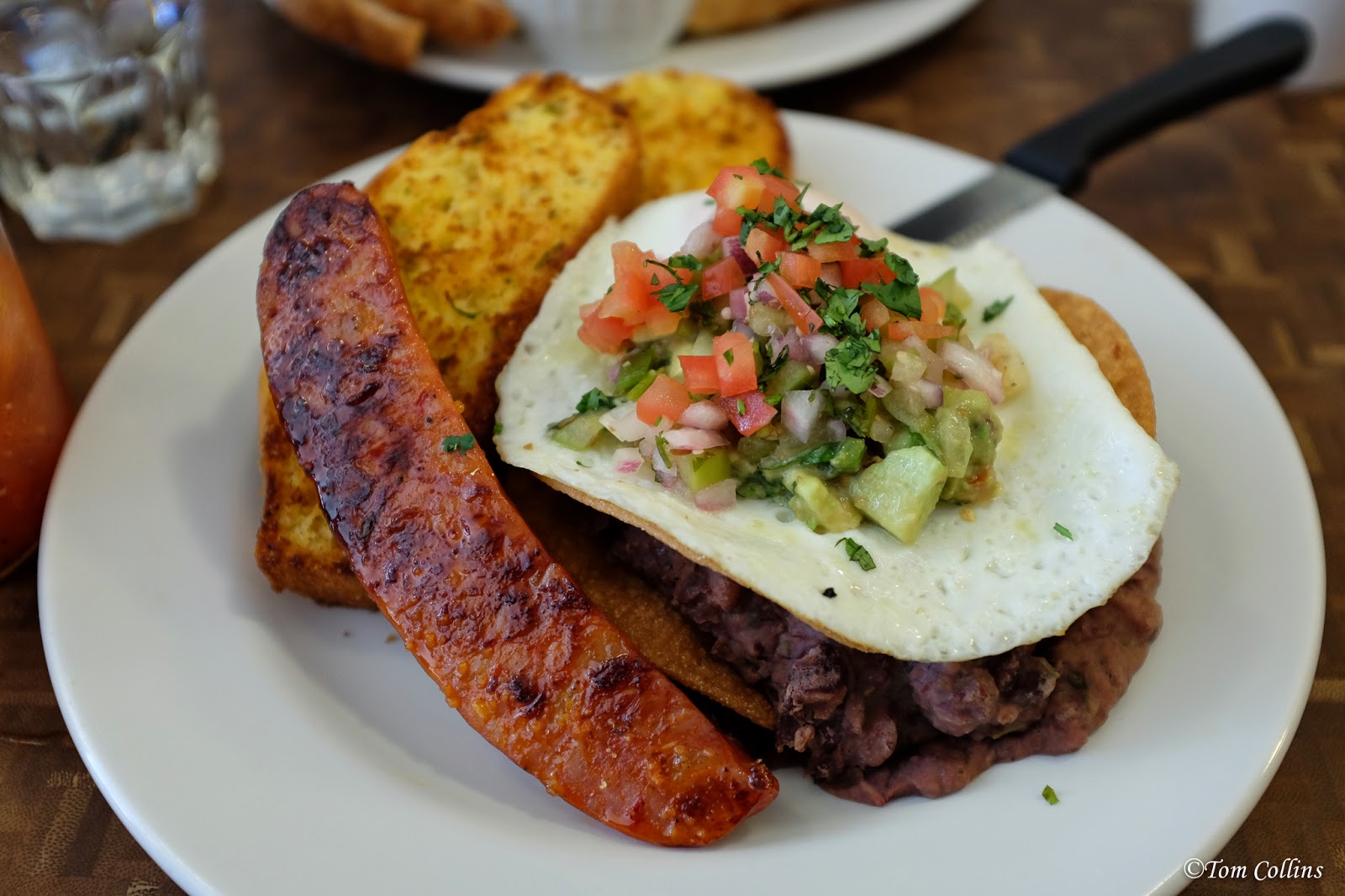 |
| Huveos Rancheros from The Jam Cafe |
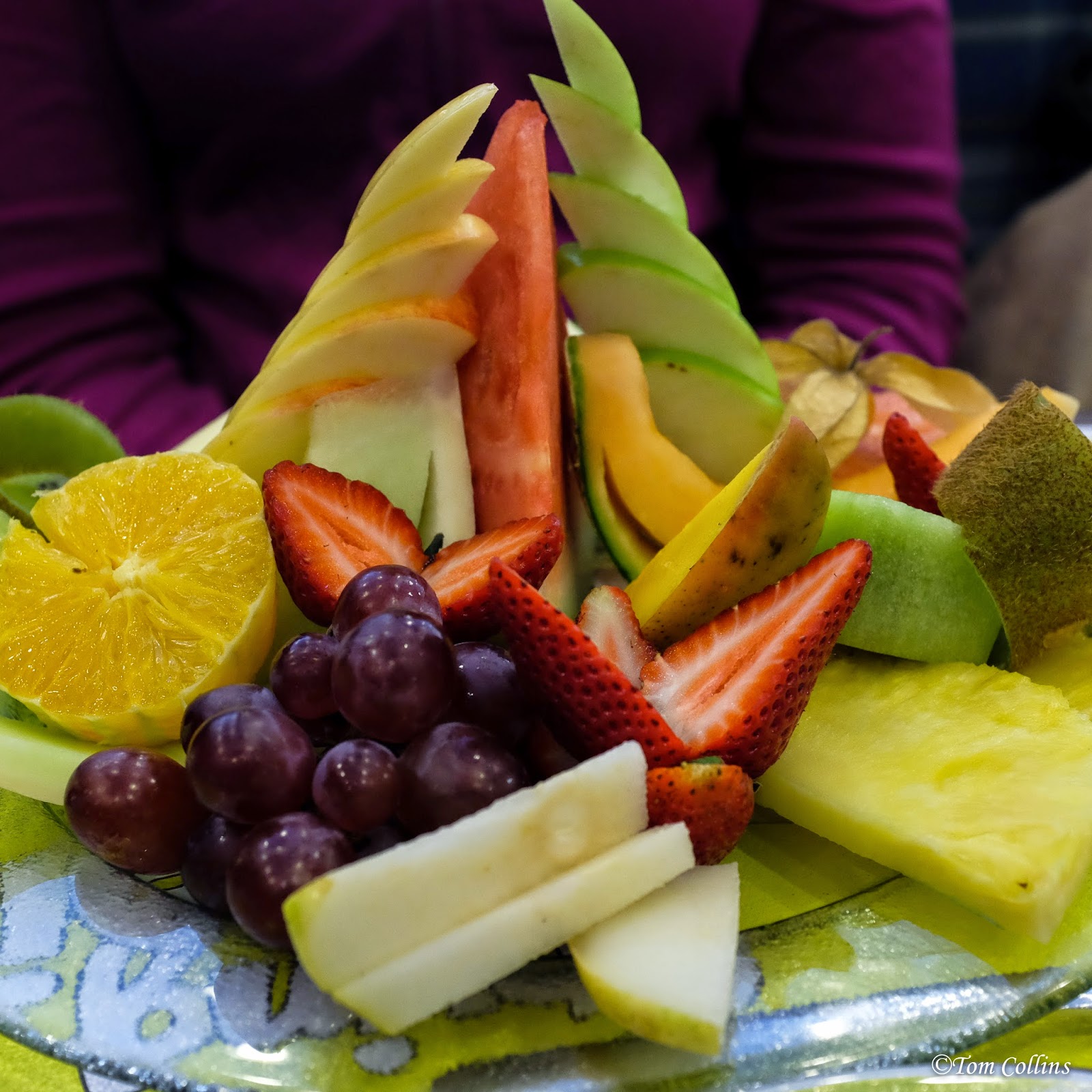
The Huveos Rancheros were perfect. Another favorite for breakfast, if you feel a need to add something healthy and add some delicious fresh fruit to you diet is Cora's on Douglas Street. Believe me, you'll get your daily serving of fruit at this place. Breakfast, lunches, dinners are all excellent at so many places you just about can't go wrong anywhere you chose.
From easy walks around the city, China Town, High Tea at the Empress Hotel,
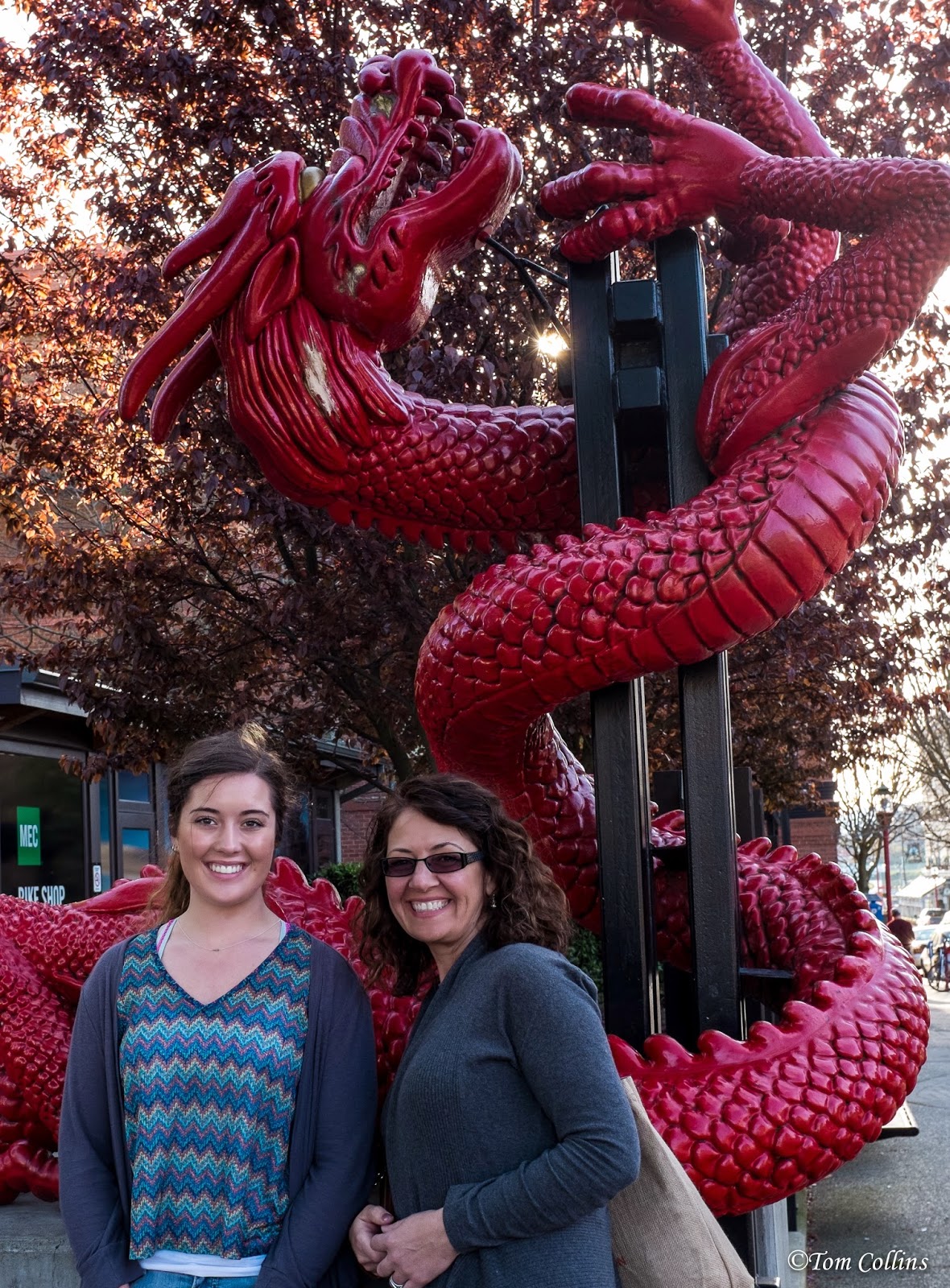 |
Lisa and Emma (my wife and daughter)
at the entrance to China Town |
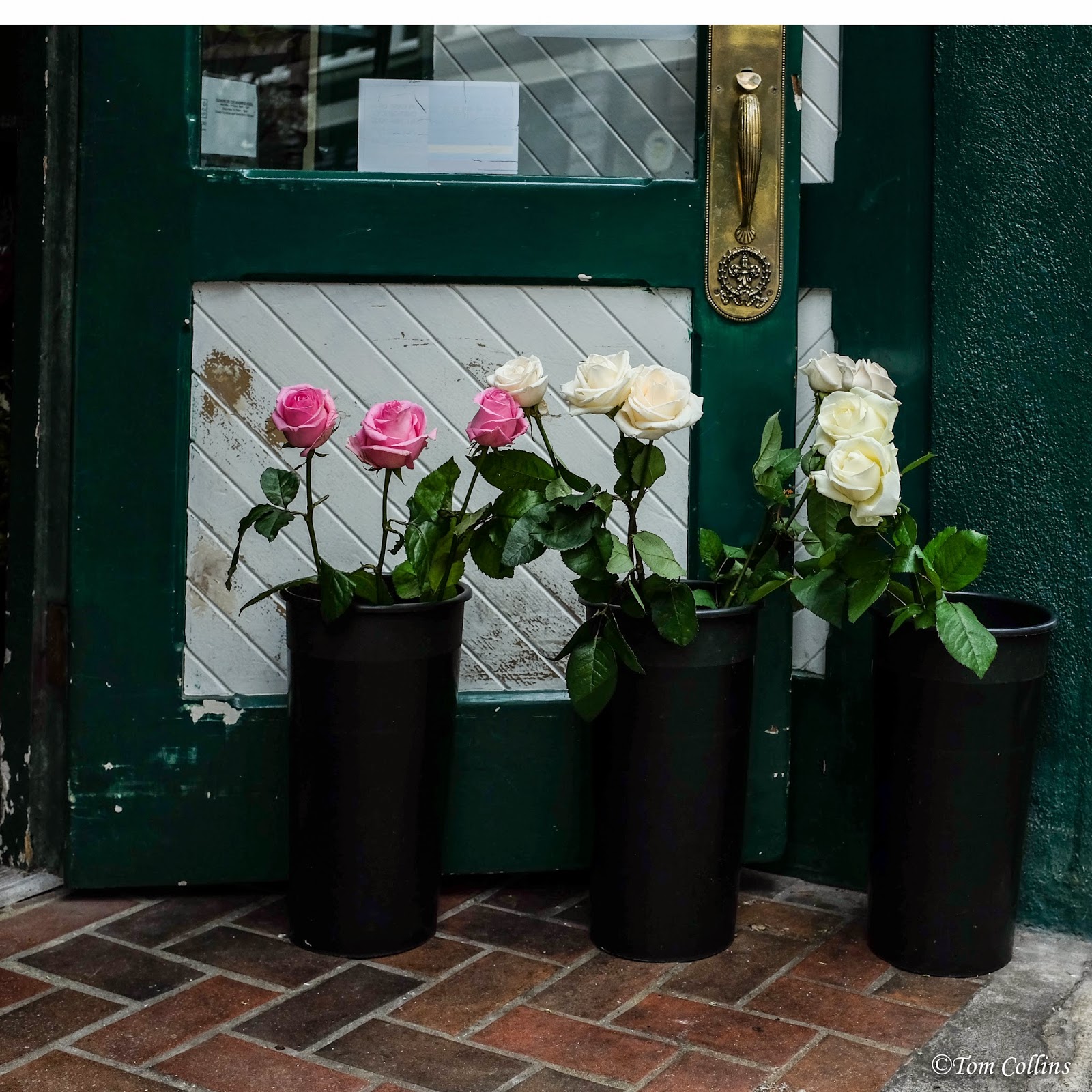 |
One of the many welcoming doors to
the shops in downtown Victoria |
water taxi rides in the Inner Harbour, to a double decker bus ride to Butchart Gardens; there is much to see and do.
The Government buildings are open to the public and are stunning structures inside and out. The British Columbia Museum of Natural History is one of the best bargains you'll find for a good half days entertainment. The rich and colorful history of the north American Indian is shown and told with magnificence and grace.
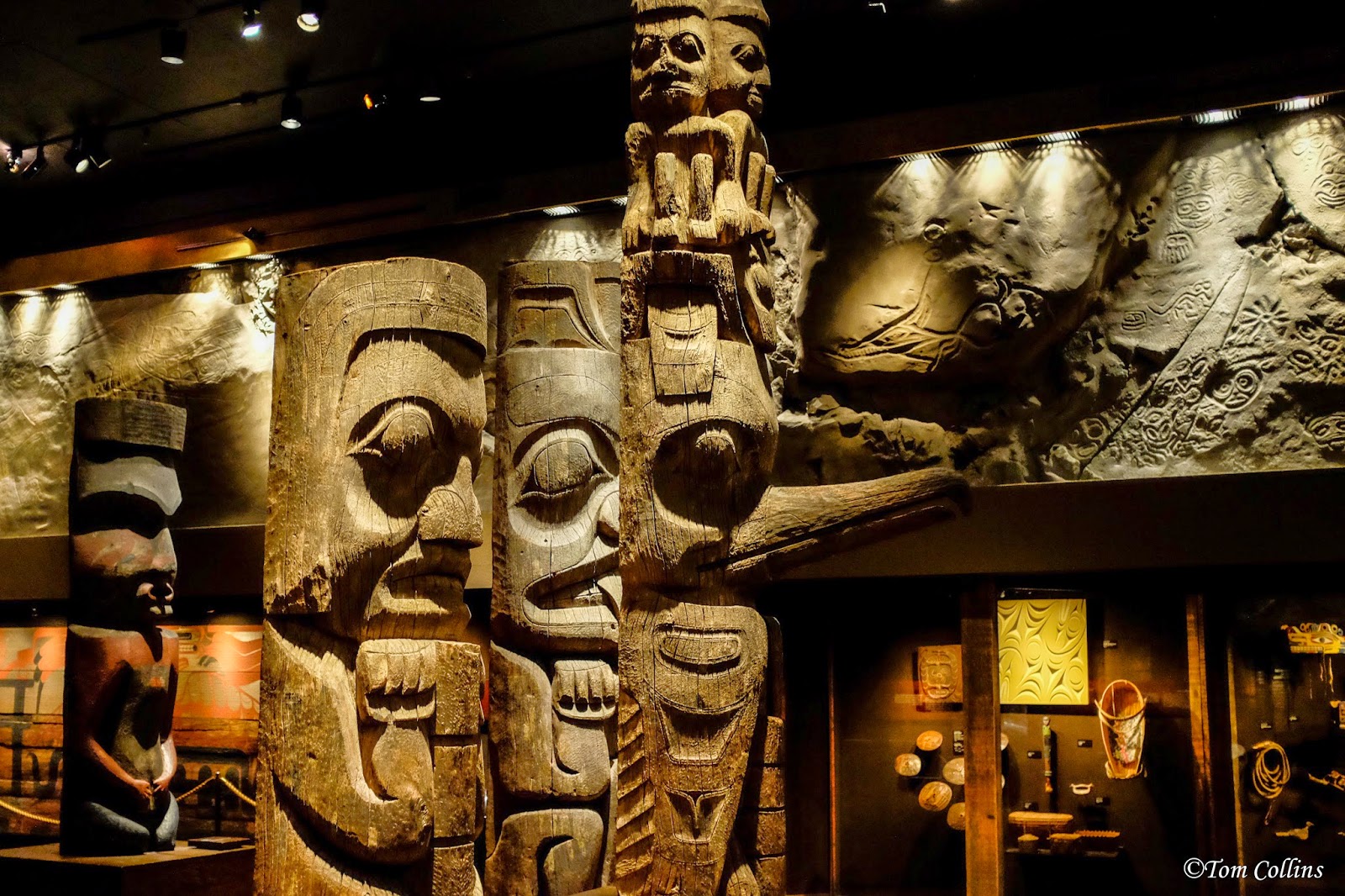 |
Totems in the BC Natural History Museum
Fuji X100s shot at ISO 3200 |
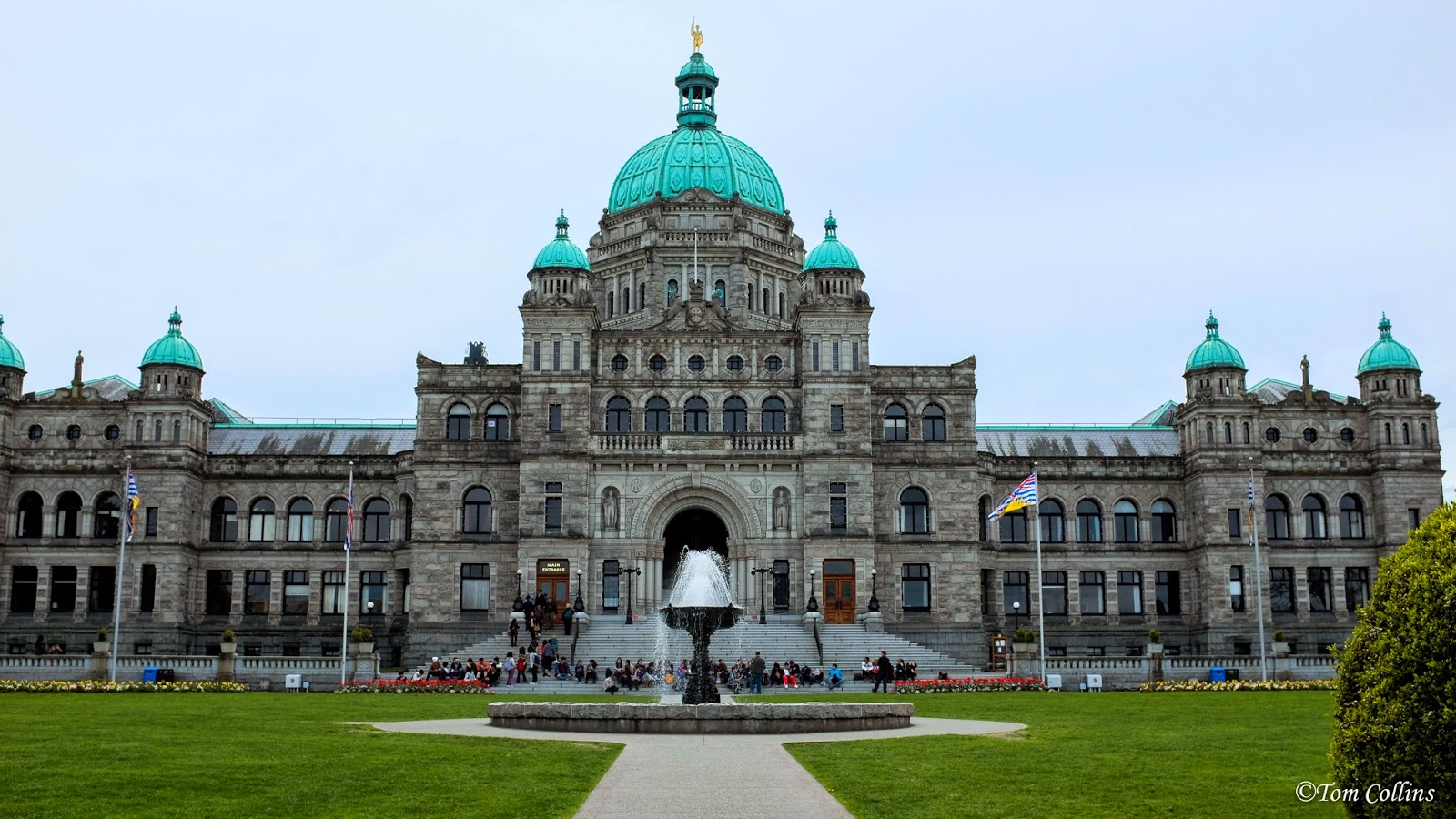 |
| One of the Government buildings open to the public. |
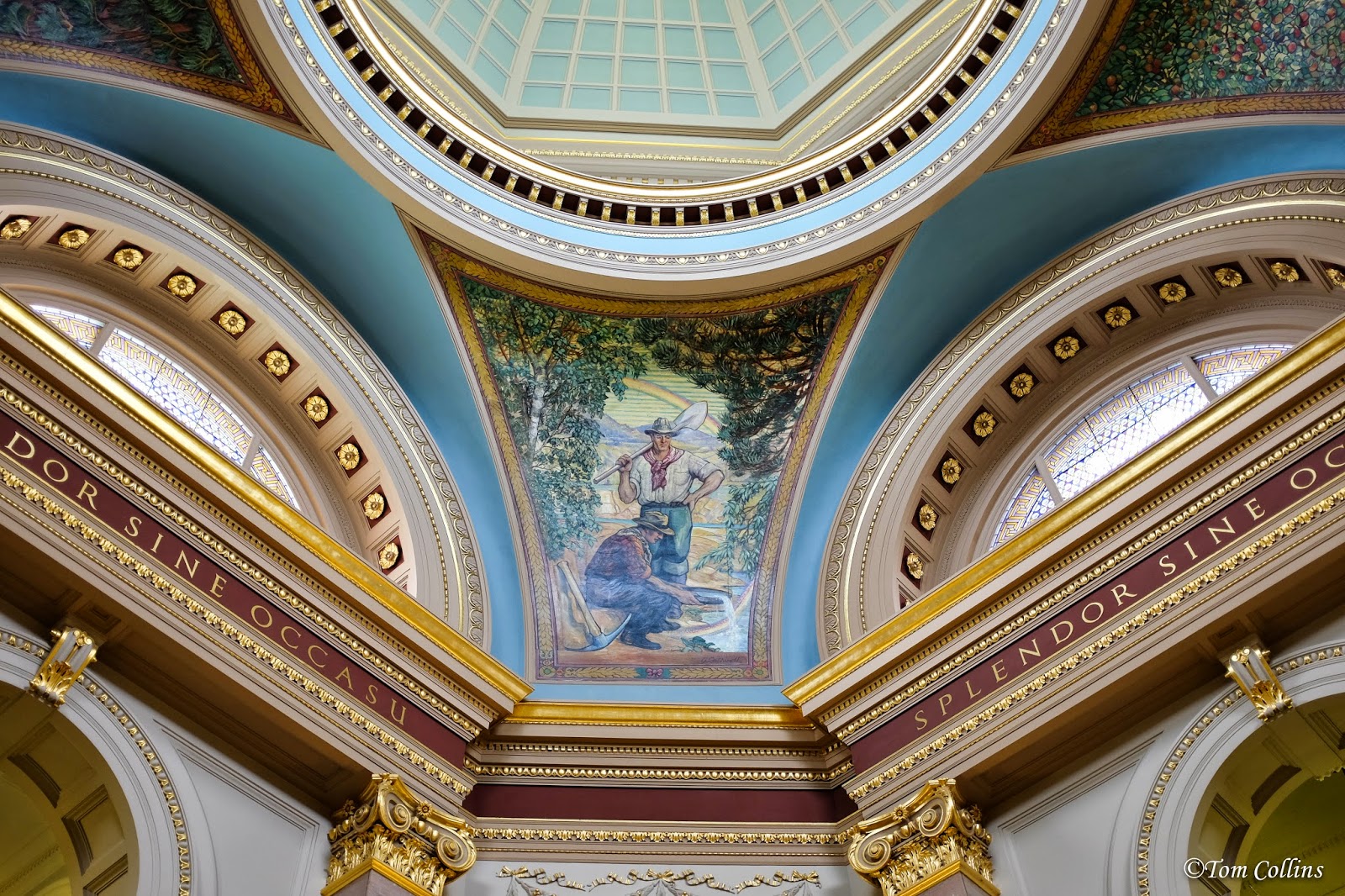 |
| The dome (partially) inside the main Government building. |
For those who love gardens, the tour to Butchart Gardens is an absolute must see. The double decker bus that transports you is located in front of the Empress Hotel and the fee to the Gardens is $25 (RT). You can also include the ticket price to get into the Garden as well for an additional $24. So for $50 you get a very comfortable 35 minute ride in a double decker bus, a great narrative of the area along the way and your tickets into the Gardens. The buses come and go every couple of hours. (Be sure to tip the driver, he's full of good information and very nice.)
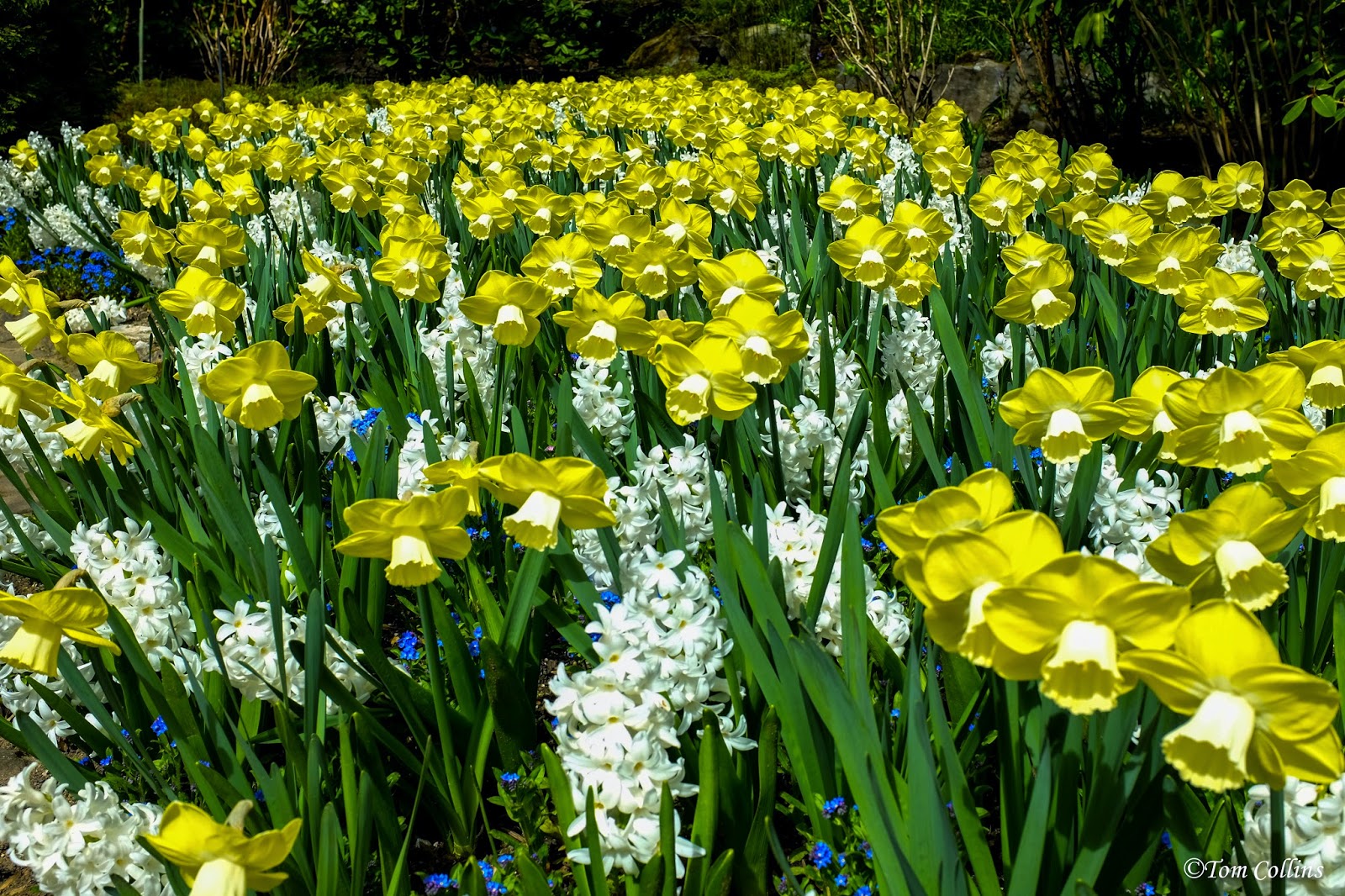 |
| Butchart Gardens |
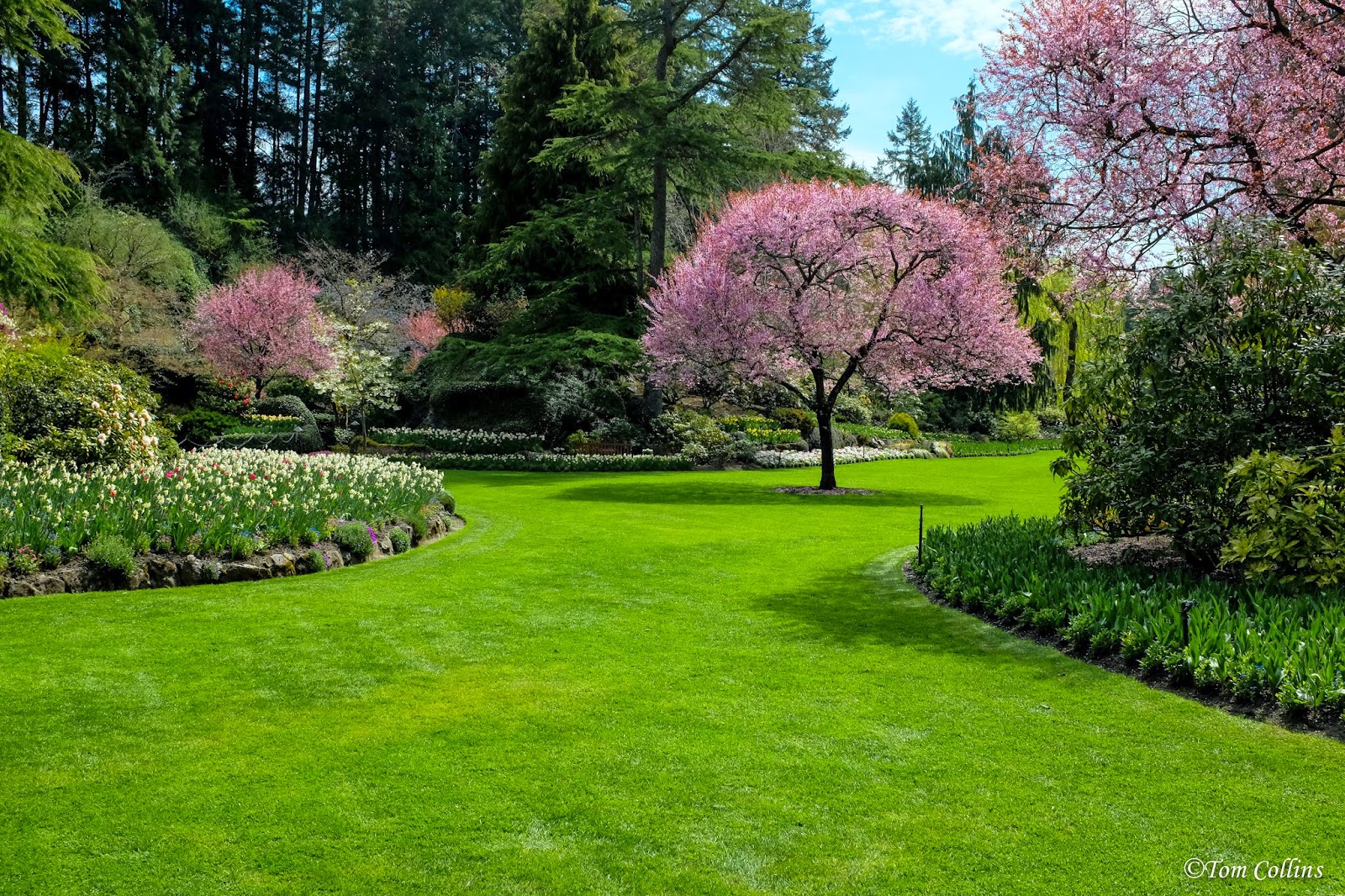 |
| Butchart Gardens |
Come back to town from a day of sightseeing and stop at any of the dozens and dozens of coffee shops, log on to the free wife networks, check your email and relax before heading back to the room or out to dinner.
If you're a night owl, get ready for some real fun. The bars in Victoria are great, lively, and happy places to be. Live music in most places seven nights a week and the atmosphere is fun, fun, fun! The people everywhere are civilized, easy going, conversationalist and open to meeting new people.
So, wondering where to go for a great little weekend get-a-way? Try Victoria British Columbia. You'll love it. We do every time we go!
Oh yeah, and the Fuji X100s was the perfect photographic travel companion. Not once did I wish for longer or wider, or this and that, it just hung nicely around my neck or rested comfortably in my hand and gave me all the images I wanted. Wonderful camera.
Thanks for reading.
Tom











































